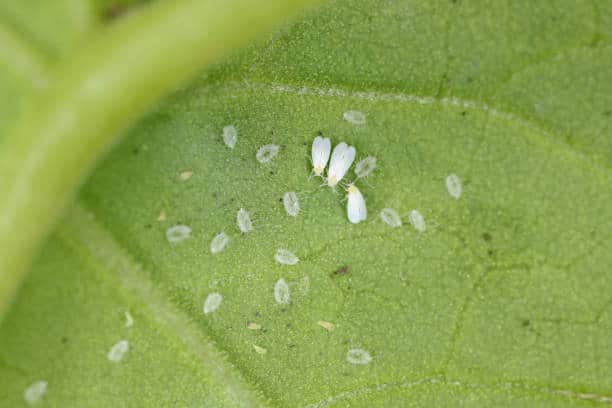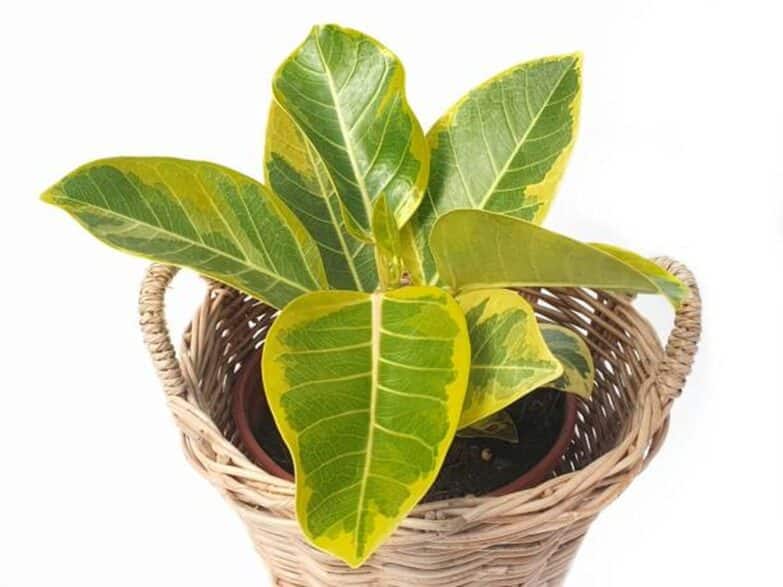Ficus altissima, commonly known as the Giant Fig Tree, is a versatile and visually stunning addition to any indoor or outdoor garden. This majestic plant, native to Southeast Asia, boasts large, glossy leaves that create an impressive tropical ambiance. Although Ficus altissima shares some similarities with its popular cousin, the Fiddle Leaf Fig (Ficus lyrata), it stands out for its ease of care and adaptability to various environments. In this comprehensive guide, we will explore everything you need to know about growing and maintaining a Ficus altissima, from its origins and characteristics to its care requirements and potential challenges.
The Origins and Characteristics of Ficus Altissima
A Southeast Asian Native
Ficus altissima hails from the tropical and subtropical regions of Southeast Asia, including countries such as India, China, and the Philippines. In its native habitat, the Giant Fig Tree can grow up to 100 feet tall, with a massive trunk and aerial roots that provide structural support. However, when cultivated as a houseplant or in a controlled outdoor environment, Ficus altissima generally remains at a more manageable size, making it suitable for various spaces.
Unique Features of the Giant Fig Tree
The Ficus altissima is known for several distinctive features that make it a sought-after plant among garden enthusiasts:
- Large, Glossy Leaves: The most notable characteristic of Ficus altissima is its sizable, glossy leaves, which can measure up to 12 inches in length. These leaves, with their striking yellow-green hue and prominent veins, create a lush, tropical atmosphere.
- Rapid Growth: Ficus altissima is a fast-growing plant, capable of reaching substantial heights in a relatively short period. With proper care, it can grow several feet in just a few years, making it an excellent choice for creating a focal point in your indoor or outdoor space.
- Aerial Roots: In its natural habitat, Ficus altissima develops aerial roots that help support its massive structure. Although these roots are less likely to develop in cultivated plants, they may still emerge under certain conditions, adding an interesting visual element to the plant.
Growing and Caring for Ficus Altissima
Light Requirements
Ficus altissima thrives in bright, indirect light. It can tolerate some direct sunlight, but prolonged exposure to intense sun can lead to scorching or leaf loss. When grown indoors, place your Ficus altissima near a bright window, preferably facing east or west, to ensure it receives adequate light. If the plant exhibits leggy growth or reduced leaf size, it may require more light.
Temperature and Humidity
As a tropical plant, Ficus altissima prefers warm temperatures and moderate humidity. Ideally, the temperature should remain between 65 to 85 degrees Fahrenheit (18 to 29 degrees Celsius). The plant may suffer in temperatures below 55 degrees Fahrenheit (13 degrees Celsius), so protect it from cold drafts and avoid placing it near air vents or drafty windows.
Ficus altissima can tolerate average indoor humidity levels, but it will appreciate higher humidity, which helps mimic its natural habitat. To increase humidity, consider using a humidifier, placing a tray of water near the plant, or misting the leaves regularly.
Watering and Fertilizing
Watering is a critical aspect of Ficus altissima care. The plant prefers consistent moisture but should never be left sitting in soggy soil, which can lead to root rot and other problems. Allow the top inch or two of soil to dry out between waterings, and then water the plant thoroughly until water drains out of the bottom of the pot. Be sure to use a well-draining soil mix and a container with drainage holes to prevent waterlogged conditions.
Fertilizing your Ficus altissima can promote healthy growth and maintain its vibrant foliage. Use a balanced, water-soluble fertilizer diluted to half strength, and apply it every 4-6 weeks during the growing season (spring and summer). Reduce fertilization frequency to once every 8-10 weeks during the plant’s dormant period (fall and winter).
Pruning and Repotting
Regular pruning can help maintain Ficus altissima’s shape, encourage bushier growth, and promote overall plant health. After the plant’s active growing season, use clean, sharp pruning shears to trim back any long or unruly branches, remove dead or damaged leaves, and shape the plant as desired. Be cautious not to remove more than one-third of the plant’s foliage at a time to avoid causing undue stress.
Repotting your Ficus altissima every 2-3 years can help support its rapid growth and prevent it from becoming root-bound. Choose a new pot that is 2-3 inches larger in diameter than the current pot, and ensure it has adequate drainage holes. Gently remove the plant from its current container, trim away any damaged or circling roots, and place it in the new pot filled with a well-draining soil mix. Water thoroughly after repotting to help the plant settle into its new home.
Common Pests and Diseases

Pest Prevention and Control
Ficus altissima can be susceptible to common pests such as spider mites, mealybugs, and scale insects. To prevent infestations, regularly inspect your plant for signs of pests, and maintain proper watering and environmental conditions to keep the plant healthy and less vulnerable to attacks.
If you do notice pests on your Ficus altissima, consider using non-toxic methods to control the infestation, such as washing the plant with a gentle stream of water, wiping the leaves and stems with a damp cloth, or applying insecticidal soap or neem oil, following the manufacturer’s instructions.
Disease Prevention and Treatment
The most common diseases affecting Ficus altissima plants are related to overwatering or high humidity, leading to root rot or fungal infections. To prevent these issues, ensure that your plant is potted in well-draining soil, watered appropriately, and provided with adequate air circulation.
If you suspect your Ficus altissima plant is suffering from a disease, it is crucial to act quickly to prevent further damage. Remove any affected leaves or branches, adjust your watering practices, and consider repotting the plant in fresh, well-draining soil. If the problem persists, consult with a local gardening expert or nursery for guidance on the appropriate treatment.
Decorating with Ficus Altissima
Indoor Displays
Ficus altissima makes a stunning addition to any indoor space, thanks to its large, glossy leaves and impressive size. Place the plant in a bright, sunny spot, such as near a window or in a well-lit living area, to create a bold focal point. You can also pair Ficus altissima with other tropical plants or foliage to create an indoor jungle vibe.
Outdoor Plantings
In warmer climates, Ficus altissima can be planted outdoors as a statement piece in your garden or landscape design. Be sure to select a location that offers adequate light and protection from harsh weather conditions, as well as enough space for the plant to grow and spread its roots. Consider using Ficus altissima as a centerpiece in a tropical-themed garden, surrounded by other exotic plants, or as a standalone feature to draw attention and create a sense of drama.
Container Gardening
Ficus altissima is an excellent candidate for container gardening, as it allows for better control over the plant’s size and growth. Choose a large, well-draining pot to accommodate the plant’s root system and ensure proper water management. When grown in containers, Ficus altissima can be easily moved indoors during colder months or rearranged within your indoor or outdoor space to create different looks and styles.
Conclusion
Ficus altissima, the majestic Giant Fig Tree, is a stunning addition to any garden or indoor space, offering a lush, tropical atmosphere with its large, glossy leaves and impressive size. By understanding the plant’s origins, characteristics, and care requirements, you can successfully grow and maintain a thriving Ficus altissima in your home or garden. With proper care, your Giant Fig Tree will reward you with rapid growth, vibrant foliage, and a captivating presence that will leave a lasting impression on all who encounter it.

